As I mentioned previously, I had long intended to go to Srinagar, but in the end the execution of the trip was a last minute thing. I do not regret the decision in any way. Even though I went at a point in the season when it was freezing cold, there was a ton to see and I really loved checking the place out without it being overrun by tourists. In many ways I got a more authentic experience in my time there than at any other place I visited.
As you can tell, even the flight into Srinagar was lovely. It’s a unique city in so far as it is a city of canals, which is also surrounded by the snowy peaks of the Himalayas. Pretty much the whole flight from Amritsar offered views like this:

Even when you arrive you get a sense of the tight control that the Indian military has over the region. As soon as you land, foreign tourists are required to register all of their details at a desk within the airport. My cell phone also went dead the second I landed. This is because the only SIM cards that work in Kashmir are SIM cards that are issued in Kashmir, all other cell phones do not work in the state. Hotels have SIM cards that they can lend out to their guests, but they obviously must have your passport number and other pertinent details to be able to do so.
For my stay I booked 4 nights in a houseboat because Srinigar is all about the houseboat experience. My understanding is that houseboats started up because at one point in the state’s history, foreigners were not allowed to own land, so their solution was to build floating homes.
I booked four nights in a hotel within the city for the remaining four nights of my stay.
Some things to know about booking a houseboat in Srinagar. The main lake in the city is Dal Lake, and 90% of the houseboats are on that lake. Booking a houseboat on Dal Lake is convenient because getting to your accommodation is a 5-10 minute shikara (the name of the boats on the lake ) ride away from the centre of town. However, you don’t want to book the houseboats that face the main tourist drag, Boulevard, because those are way too noisy even if they look super convenient. There’s a row of houseboats right behind that are much nicer. However, everything on Dal Lake is going to be pretty loud because it’s closer to the main roads.
Your second option is Nageen Lake where I stayed. The massive downside is that getting to the houseboats is a 20 minute tuk tuk ride away which adds about $12-15 CDN a day in transport costs to make the trip there and back if you want to go to the centre of the city each day. On the other hand, the houseboats there are super quiet. There was something magical about my nights there when all I could hear were the sounds of the various prayer chants from the nearby mosques. If you pick a houseboat on Nageen Lake, you’ll be dropped off by your taxi across the lake from the place, this is normal, there is no convenient access road to the rear of the houseboat.
Regardless of where you stay you have to make sure that the price you settle on includes two things:
1) Unlimited shikara rides to and from your houseboat (some houseboats include no transport at all, and given they can only be accessed by boat, that means you have to pay each time you get on or off the boat).
2) That if you go in winter, it includes heating. That being said, even if the price includes heating, they don’t run the heater all day and night, you’ll just get a stove full of firewood for the evening, it’s not cold enough during the day to justify constant heating. At night good places will provide a hot water bottle and thick blankets so it isn’t worthwhile to heat the place throughout the night either.
You can book meals as a part of your stay on a houseboat and mine were reasonably priced. You’ll definitely want to have a package including breakfast and perhaps dinners if you are on Nageen Lake, more about that later.
Some shots of my initial arrival and first cross-over to the houseboat:



Here are some shots of the houseboat I stayed in, one of the Jewel in the Crown group of houseboats. It has four rooms, but I was the only occupant for three of the four nights:

My room:

That’s the wooden stove that got lit every evening to warm up the room for a few hours. I still woke up being able to see my breath every morning, which is not too pleasant in the mornings but thankfully they had steaming hot water in the shower.

The seating area at the front of the houseboat:

The bathroom had a bathtub with a movable shower head, but the rest of the floor was carpeted, albeit covered with some plastic, but I figured it was still pretty obvious that one should not shower over carpet. As such, I found it baffling that they had to post this notice. That being said, the fellow who was taking care of me made sure to repeat the point in person so carpet showering has apparently been a problem in the past.
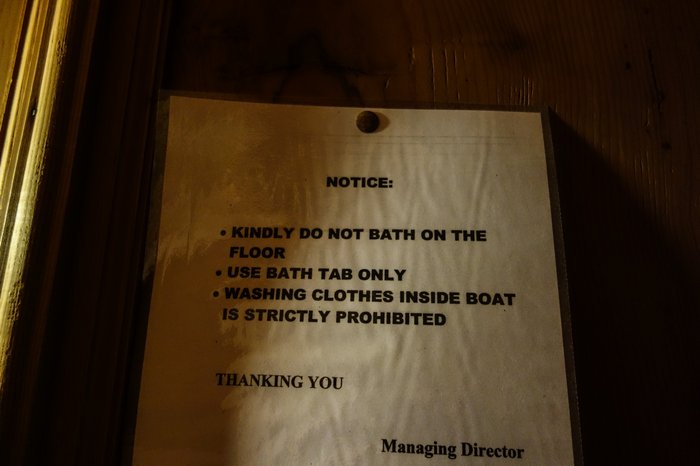
The common area:

I went off to dinner that evening after dropping off my stuff. A picture from the shikara ride back to the other side of the lake:
I
Hanging out at what proved to be my second-favourite restaurant in town, Shamyana, which was recommended by the nice Kashimiri fellows I met in Amritsar:

Kashmiri cuisine is all about their meats, and man do they execute them well. The sauce on the right was remarkably similar to a chimichurri sauce:

After dinner, I went for a bit of a walk trying to find some of the cafes that are recommended on Zomato and my Lonely Planet Book (there are no bars in Srinagar aside from the pricey hotel bar at the out of the way Lalit Grand Hotel. If you want to purchase alcohol there are literally three shops where you can do so in town all at the Heemal Hotel on the main Boulevard). On my walk, it quickly became apparent that the city really empties out at night. There are pockets of activity on the Boulevard, and at Lal Chowk (and on the way to Lal Chowk), but even then people are sparse. I ended up at Coffea [sic. ] Arabica which has a nice selection of pastries and looked like a decent restaurant. Even at 8:30 pm, there were only two other tables with people. It is also a little disconcerting that like Amritsar, between the pockets of activity, the streets are completely isolated and poorly lit at night.
After having a bit of cake and some tea, I decided to make my way back to the houseboat. I tried taking a tuk tuk, but because the area is so isolated I couldn’t for the life of me find one so I had to walk back to Boulevard through the empty streets. I ended up meeting two nice fellows who took me to the houseboat on a tuk tuk. But again, the roads on the way back were really dark and really isolated. To make matters worse, we got stopped at a police checkpoint by two officers who were not in uniform who made me get out of the tuk tuk and looked in my bag.
When I finally made it to the ghat (dock with concrete steps) and across the lake to the houseboat, the fellow taking care of me lit the wooden stove which warmed things up a bit for a few hours. This is when the paranoia kicked in. At this point, I remembered seeing one western lady in the airport, but aside from her I had seen no other western tourists at all since my arrival. As such, I started wondering if I missed an important memo about the advisability of travelling to Srinigar. I started by looking at the notes that I took down from my friend Simon who has spent many months in India. This is literally what my note said about Srinagar: “Too dangerous.” I had heard so much about Srinagar that it didn’t occur to me to check the notes.
At this point, mind racing a bit, I looked up the travel advisories from Canada which didn’t help. Usually they’re pretty specific about areas not to visit and even in some pretty hairy places they typically just advise you to take certain precautions. Not here, they specifically advise against going to the entire state of Kashmir, no exceptions, no ambiguity.
This is where my mind got a bit ridiculous. I start remembering that I ended up in Srinagar because two fellows who study in Pakistan and that I randomly met in a restaurant, persuaded me to go. Let’s keep in mind that this was maybe one month after the attacks in Paris, so I started to absurdly wonder whether this was all a ploy to get a Canadian guy to go into Kashmir alone to grab him.
Anyways, the ridiculous train of thought ended soon-after. I decided to check the British travel advisories, figuring that they know India far better than we do. The British advisory was more detailed and in the end actually made sense. The British Government says that one should generally avoid Kashmir with the exception of Srinagar, Leh, Ladakh and Jammu. They advise that tourists themselves have never been targeted in any violence, the main issue is that there have been violent protests in the past between Kashmiris and Indian forces and it could be dangerous if you happen to get caught in the middle during a skirmish. My subsequent conversations with locals confirmed the wisdom of the British position.
Here’s the situation in a nutshell. First of all Kashmiris are ridiculously nice and love tourists, all the more so if they are not Indian. I can’t emphasize how much they hate the Indian government and Indians in general. Within minutes of meeting a local if you engage in any sort of meaningful conversation, they’ll voice their displeasure with India. They see Indians as an occupying force and just want to be able to govern themselves. The frequent para-military police check-points and the heavy armaments around the city certainly do not help. And don’t misunderstand me, people assume that Kashmiris who are predominantly Muslim want to join onto Pakistan due to religion but nothing could be further from the truth, they hate Pakistan just as much. What they want is self-determination. They’ll tolerate Indian tourists because they need the money, but they really love western tourists so you have nothing to fear. And the last violent protest was in 2008 so the political situation isn’t exactly at a boiling point.
That being said, I generally tried to be back by sundown or very soon after. The streets just get too isolated, and Srinagar has a bit of a problem with stray dogs. There are a lot of dogs roaming the streets at night and they can get aggressive. At one point a dog chased me in broad daylight, though I never saw any other overt signs of aggression during the day. I started carrying a stick around when I was out at night due to the dogs.
The next morning, feeling better about being in the city, I started off my morning by hiring the shikara paddler to take me on a trip of the more populated half of Dal Lake for 1.5 hours, ending in town (cost $20 CDN but saved me the $6 CDN tuk tuk ride into town). Some shots from the tour (note in the first photo that I’m wearing pretty much all the warm clothing I have, 4 layers), it’s not particularly warm even during the day:




The city has these walkways all over the place to cross sections of the lake, no handrails. At one point I saw some kids playing on a bridge with a bike. Note also the long garb worn by the man. Kashmiri men wear those loose fitting robes. When I finally got to touch one however, I noticed that they are not particularly thick so I wondered for a while how they could keep people warm. It took me a couple of days to figure it out, but this photo hints at the answer, note that the man only appears to have one arm out and there is a bulge at his front:



This style of building was typical of older homes in Srinigar, stone interlaced with wooden framing of the windows:


A typical shop used by locals. Note that the main access to the store is only possible by boat. There were a lot of businesses on the canals accessible only by boat:



A fast food restaurant in the middle of Dal Lake. There are rows of houseboats on both sides of the lake, so plenty of customers:

A short little video of a bit of the boat ride:
A row of shikaras lined up next to Boulevard. This is where my shikara tour concluded for the day.

I spent the rest of the morning checking out some of the sites in the old city, starting with the Khanquah-Shahi Hamadan. The building dates back to the 1730’s and it is a Muslim meeting hall. Unfortunately, tourists are not allowed inside:




Next, I went off to the Jama Masjid which is the largest mosque in the city, with a capacity of 3,333. The mosque was built back in 1672:

It’s a very simple design, with very little ornamentation. Apparently all of the 378 columns supporting the structure are said to have come from the trunk of the same deodar tree:

After that, I went back to the awesome Shamyana for lunch, this time trying the Goshtuba Wazan. The dish consists of a number of tasty mutton meat balls in a unique sauce that seemed like a creamy chimichurri. The photo below is of the amazing Kashmiri tea, Khewan. It’s a tea with cardamom and cinnamon which is brewed with a single strand of saffron and served on a bed of almond shavings. On its own the tea smells great but is a tad bland, however when you add just a touch of sugar, the taste really pops out:

In the remaining hours of daylight I went off on a walk to the Lalit Hotel as it is supposed to have great views. Once I got to the spot marked on my GPS the hotel was nowhere to be found, so I just turned back. I would later learn that the hotel is a fair distance away up the same road, Google Maps has it marked down in the wrong location. I then decided to go to the Lal Chowk market area for a look around.
Photos from my walk:
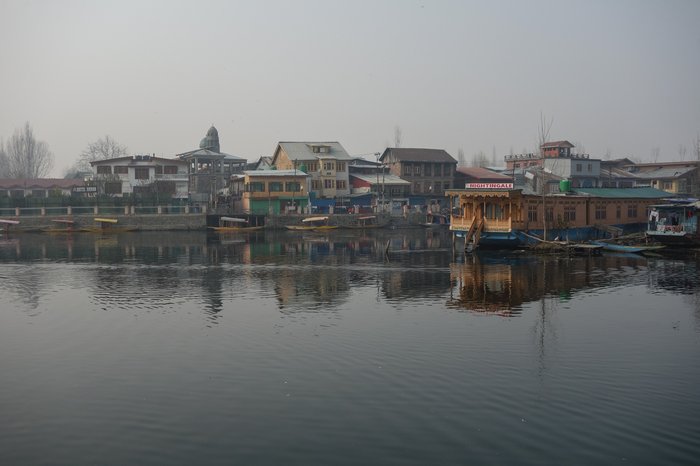
This is a square just bordering the Lal Chowk market area. Note the heavily armed police officer in the shot, these guys were EVERYWHERE in Srinigar:


I walked back in another direction, crossing over a bridge that was packed with vendors:



When I got of out my tuk tul the night before, for some inexplicable reason I told the driver, “See you tomorrow!” We both laughed, but strangely enough that’s his house on the picture below. He came out just as I was walking by, and I yelled at him “I told you I’d see you today!” That really sounds creepier than it was …

I decided to eat dinner on the houseboat for the remainder of my stay to avoid being out on the street at night too much. The same fellow who has been looking after me cooked me my meals. Here’s the dinner from my second night on the houseboat:

The following morning, I hired the shikara fellow to show me the second half of Dal Lake for another 1.5 hour tour ending in the city. This part of the lake looks a little bit bleak in the photos but I ended up enjoying that side as much as the first:



The shikara paddler picked out a floating flower and fashioned a cool necklace by folding over sections of the green stem, revealing the red underneath:






By this point I’d bought a toque and some gloves in town which were my best friends for the remainder of my time in Kashmir:

You’ll note that the sky looks a little bit brown and hazy. I noticed that even as we were flying into town. I thought about it while I was in town because there really aren’t enough cars around or any sort of industrial activity that would explain the pollution. In the end my best guess is that it’s caused by the almost exclusive use of firewood to heat homes during the winter.





This is the solution to the puzzle of how the men stay warm despite their cloaks not being particularly thick. Underneath their cloaks they carry a woven basket that holds a clay pot with smoldering ashes. I wasn’t able to make out what exactly they are burning but whatever it is doesn’t produce much smoke and generates heat for at least four hours.

I didn’t do too much that was productive that afternoon. I had an early lunch at a place on the Boulevard called Stream, but it wasn’t nearly as good as Shamyana. After lunch I spent a couple of hours looking for a Spice Jet office and then finally ended up with a pair of travel agents booking flights for a side-trip to Delhi (I did return as promised). I had dinner again on the houseboat and an uneventful evening watching movies in my room hence the lack of photos. The only eventful thing is that this was the only night that I was not the sole guest on the houseboat. Two Indian couples spent the night on the boat and I got to chat with one couple, software engineers from Bangalore. The company was nice for a night, but it meant staggering meals and it did get a little bit noisier.
The following morning I decided to check out the sights near Nageen lake before ending up in town. I ended up walking about 10 km around the north end of the lake that morning. My first stop was the University of Kashmir which is a 15 minute walk from where the shikara crosses.
A group of kids playing cricket in a parking lot along the way:

The University of Kashmir:

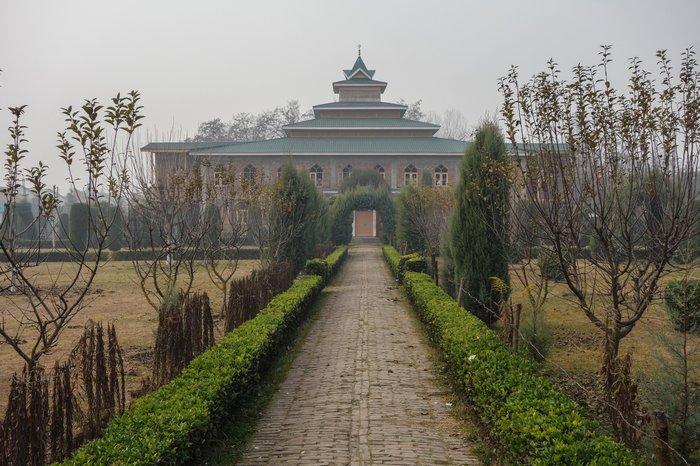



After the University I headed east a bit to the Hazratbal Mosque. It’s a 20th century mosque so it doesn’t have a lot of history, but it is nevertheless the most important mosque in the city. The reason? It contains a vial which supposedly contains one of the hairs from the beard of the prophet Muhammed. The hair was stolen in 1963 resulting in riots until it was returned.
This is just a random wall I found interesting along the way:
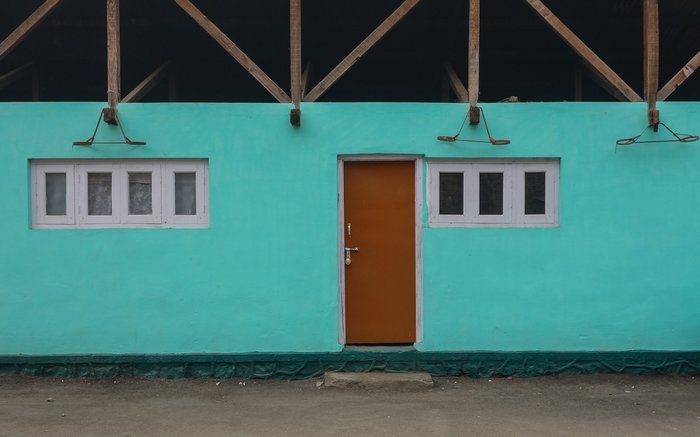
The mosque:



This is the large area by the lake right next to the mosque:


Kids again playing cricket in a huge lot near the mosque:

From the mosque, I had to go all the way around the top of the lake to make it to the gardens on the other side. I could have easily just taken a shikara across, but I figured the walk would be pretty. I will also confess that I didn’t quite appreciate that the walk would be 10 km. Photos from the walk to the gardens:








As the name would suggest the Nishat Mughal Gardens were built during the reign of the Mughals in Srinigar.
Photos of the gardens:

Pictures can’t really capture how amazing those huge trees below looked in person:




A gardener offered to take my picture and had me hold his warming basket:

By the time I left the gardens it was nearly 3:00 pm and I was pretty tired from the long walk over so I took a tuk tuk into town, for lunch at Shamyana again. Here’s what Kashmiri Wazan looks like:

After lunch, I hired a tuk tuk driver to take me up a small mountain to the Pari Mahal. Bring your passport along as there is a police checkpoint on the way up the mountain:


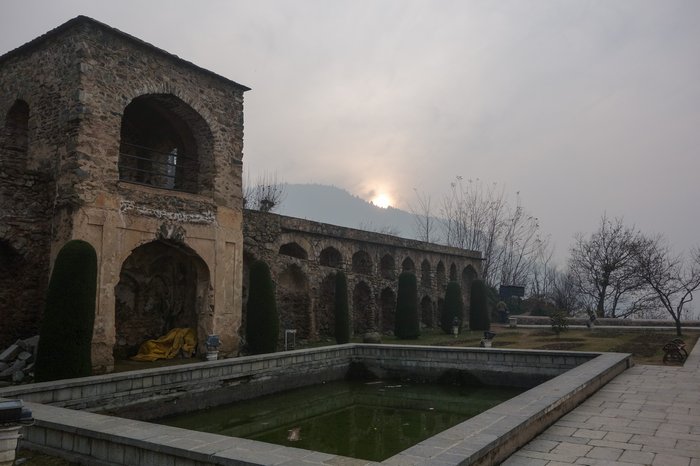

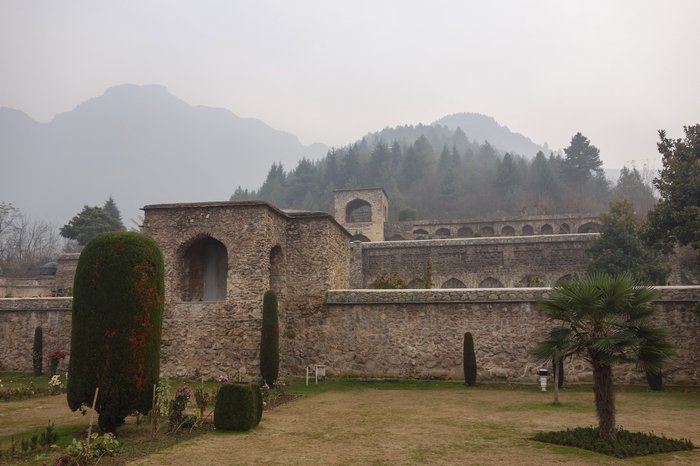

When I got back down, I stopped for some tea at a Cafe Coffee Day (overpriced tourist coffee shop chain) and then made my way back to the houseboat for dinner and my final night on the boat.
The following morning I checked out and took a tuk tuk to the New Prince Hotel where I had booked a room for the night. When I got to the place I was instantly demoralized. The lobby itself was not particularly clean and looked like it was in the middle of construction. When I was taken to my room, things didn’t really improve. The paint was seriously peeling all over the place, the bathroom was not particularly clean and the floor was mysteriously wet due to a leak somewhere. The worse part was that the room was not at all heated. You have to understand that after 4 nights of no heating in 0-10 degree weather, I was desperate for some heat so the lack of heat crushed me. I asked what was up with the lack of heat and the guy came back with a space heater that was so run down that it didn’t even have a proper plug. No word of a lie the plug consisted of two bare wires that they inserted directly into the wall plug. To make matters worse the heater didn’t ever really work, I could feel no heat 30 centimetres from the heater. I told the guys at the hotel about the problem and they insisted that the heater would heat up such a small room. It did not, so my first task of the morning was to find another hotel. Though really I can’t be too surprised, the hotel was $12 CDN a night. I am rather surprised that it had so many positive reviews!
After booking the new hotel for the next night I decided to try out a restaurant that was recommended to me by the taxi driver from the airport. And right he was, the food in this little place was amazing.
The place is tiny. They prepare the food in the morning in the area that is then used by patrons in the afternoon. The cook fires up your fresh meat outside, and the dishwasher is next to him. You have two choices, a skewer with morsels of lamb, or a mutton kebab of minced meat. Both are absolutely brilliant and are served simply on a plate with a number of dips, some pickled red vegetables with a bit of a kick and some bread. It is also really reasonably priced, a meal with one skewer/kebab (usually enough) is $3 CDN, $4 for two. The restaurant:






After lunch, I took a bus north from centre of town a kilometre or two to check out some more sights in the old city. The local buses are pretty crowded but they come every minute or two and for a few pennies they can get you half way up the city. There is really no need to take a tuk tuk from the centre of town to the upper reaches of the old city:




My first sight was Rozabal. It’s actually the shrine of Hazrat Yousa Asif, but the shrine is better known for the contents of its krypt: some believe this shrine to contain the tomb of Jesus. The Koran holds that Jesus didn’t actually die when he was crucified. There is a theory out there that after his supposed death, he escaped and lived out the rest of his days in Kashmir. On the one hand there is pretty much zero historical evidence to back up this claim. But when you really think of it, there is also pretty much zero historic evidence for the version of events laid out in the New Testament, and moreover the latter theory is scientifically impossible. So if you had to pick between the two theories, the Jesus-dying-in-Kashmir theory explains the missing body and the sightings of him walking around after-the-fact. So between divine resurrection and escape to Kashmir, I’d put my money on the latter.
The shrine:



Two cool gates that I encountered on my walk to the next site:

I took a short bus ride further north to the Naqshaband Sahib shrine from the 17th century. The alternating layers of wood and brick are a structural design to help the shrine stay standing during earthquakes. It’s still standing so maybe the design works?


My next destination was a fifteen minute walk west towards the river–the Badshah Tomb which is appropriately located in the middle of a cemetery. The tomb was built in the 15th century by King Zeinalabdin for his deceased mother. The first shot is of a taylor’s makeshift shop outside the walls to the cemetery:

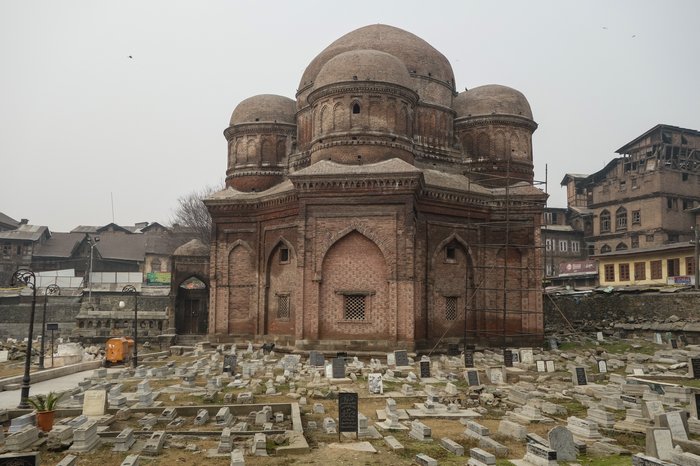

After that I returned to the main road to take the bus even further north to catch a glimpse of the Hari Parbat Fort at the top of a strategic hill by the same name. Because the fortress is still an active fort used by the Indian military, it is strictly off-limits. Shots of the fort and the neighbourhood surrounding the fort:


I then took the bus south again stopping briefly at the Pir Dastgir Sahib, a Sufi shrine:


The following day was a quiet one for me. It was raining for much of the day, which on top of the cold didn’t exactly make me want to venture outside too much. When the rain stopped for a bit, I managed to go out and take a few pictures around some of the old canals just south of the old city, I was specifically trying to find some of the walkways over the canals but they were surprisingly difficult to find. Not to say that my day was uneventful. First thing in the morning I checked out of the terrible hotel and into the much nicer Hotel Royal Battoo which actually had proper heating! It doesn’t sound like much, but this was the first time in 5 days that I was finally warm.
A photo from my brief walk that day. More kids playing cricket:

The following morning I went to the ski town of Gulmarg for the day. Given that this post is already enormous, I’ll be posting my photos from that daytrip in a separate installment. After Gulmarg, I took a one hour shikara night trip through the touristy parts of Dal Lake:






I managed to record sounds of the evening call to prayer during the ride:
After finishing the shikara tour, the owner of the boat offered to take me to the vegetable market in the morning. I had been wanting to see it, and now that I was in a hotel that was much closer to the canals that meant that I could be at the market faster. I agreed and we set a price. Given that we were meeting up at 5:30 am, the man was very insistent on shaking my hand to confirm the deal.
Well, fast forward to the following morning and there I was at 5:30 am, standing by the ghat like a jackass. He never showed. I HATE waking up early, and to make matters worse the front gate of the hotel was locked so I had to hop the massive gate twice that morning. I was not amused.
The only positive thing that came out of being stood up was that I was in a perfect position to record the morning call to prayer with absolutely no traffic noise:
I obviously went back to sleep for a few hours and then after breakfast I made a second attempt to locate the many walkways above the canals, this time with more success:








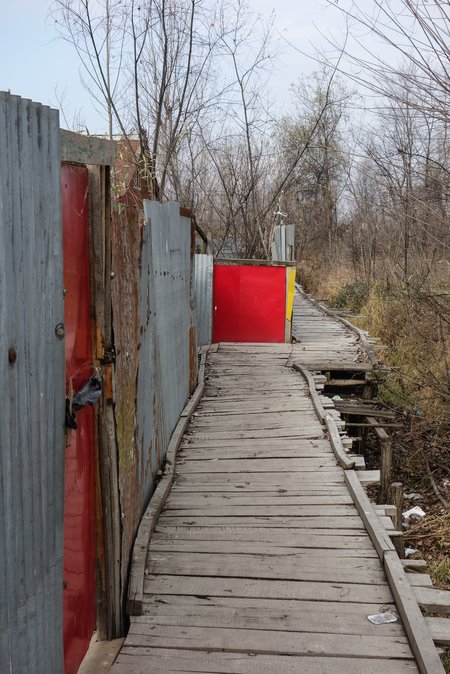


During my walk around the canals, I met a shikara owner and fisherman who offered to show me around the canals on a 1.5 hour tour. At the end of the trip, he also agreed to take me to the vegetable market the following morning. I wasn’t going to be stood-up twice so this time I insisted that the deal include being picked-up from my hotel in the morning. Photos from the tour of the canals:
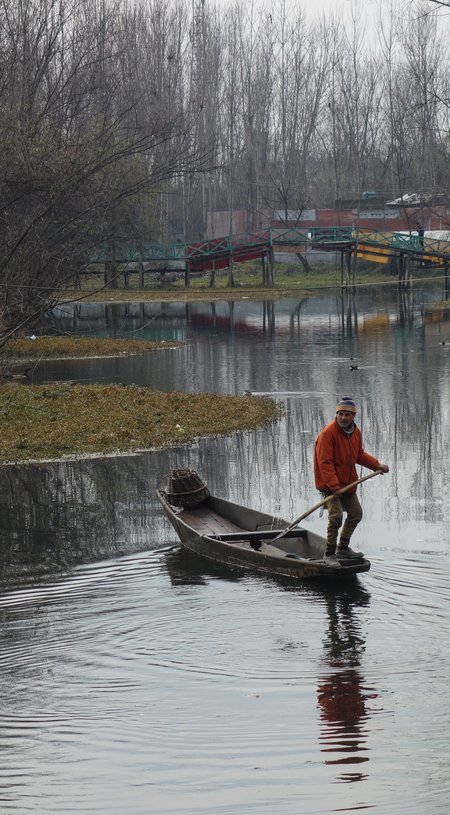








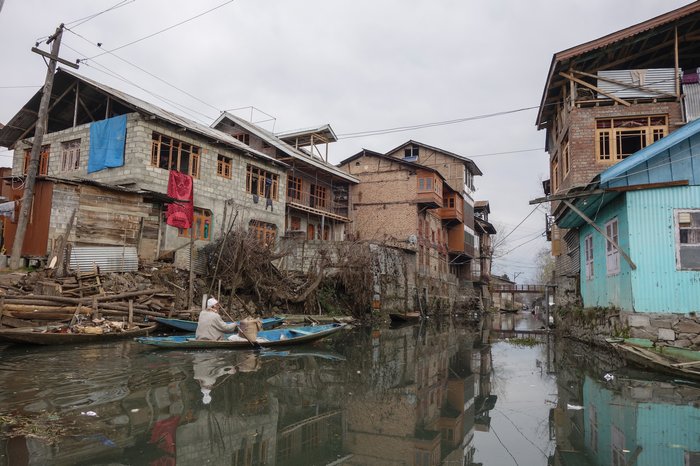









The following morning I managed to get the fellow from the gate to open it up for me so there was no jumping of the gate required. So there I was at 6:15 am at the agreed upon time, and … nothing. I was absolutely livid, I couldn’t believe that I was getting stood up yet again. But to my relief, he was just 15 minutes late, and he arrived on a scooter so we didn’t lose any time. My photos from the early morning floating vegetable market and the boat ride there:
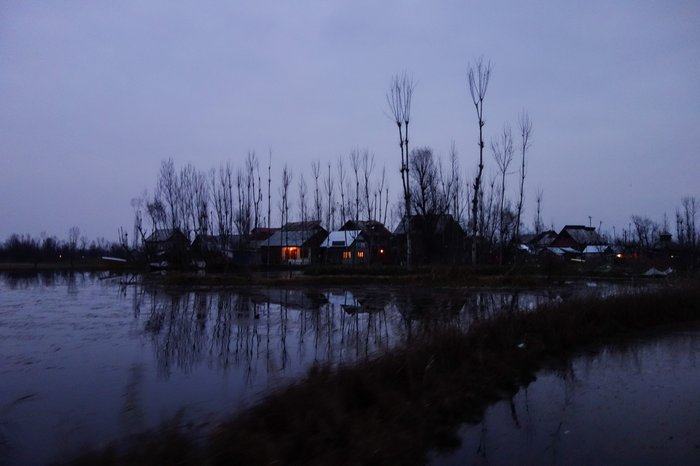
 \
\

The vegetable market:







I had a flight out to Delhi that same day. I leave you with a final picture from the boat ride back from the vegetable market:


Fascinante
No se como te atreves a visitar esos lugares tan extraños y aparentemente nada turísticos.
La verdad creo que te estas arriesgando demasiado, andando solo. Si algo te pasa ni como darnos cuenta. Claro que lo vivido nadie te lo quita.
Me impresiona ver la cantidad de lugares que visitas. Admiro tu espíritu aventurero y tu curiosidad de conocer la vida real de esos lugares.
Ten mucho cuidado. No te confies. Ve la manera de que alguien este pendiente de ti en cada lugar. Haslo por tu tranquilidad y la nuestra.
Un abrazo.
LikeLike
Hey – I feel your pain at wondering whether to follow the travel advisories. Last year, my dad and I were in Kenya shortly after the terror attack in Garrissa (sic?). I found the UK and US advisories the most intelligible. The Canadian ones…not so much. Local information tends to beckon you to come (tourist $$), while home state information is often worded ambiguously (deliberately I say, to avoid liability). You wonder about your “risk profile”, and you try to get a sense of whether and to what extent your security will be threatened. Striking the balance of fearlessness (stupidity?) and safety is tough. The decision to go or not strikes me as being highly individualized.
Peace!
LikeLike